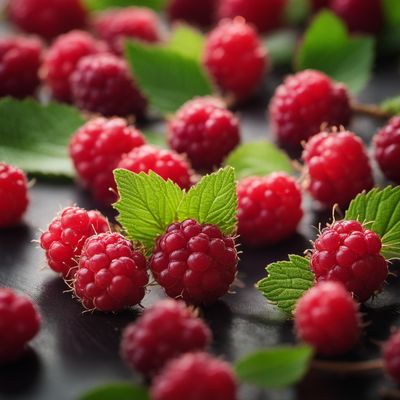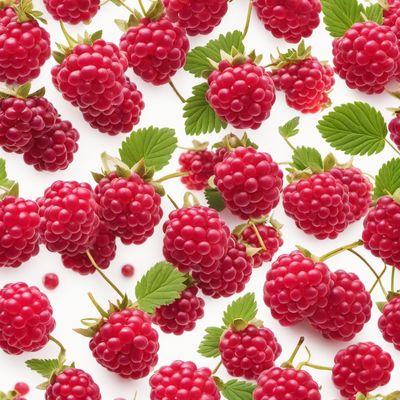
Ingredient
Raspberries and similar-
The Vibrant World of Raspberries
Raspberries and similar berries, such as blackberries and blueberries, are small, round fruits with a vibrant red color and a sweet-tart flavor. They have a delicate texture and are often enjoyed fresh or used in desserts, jams, sauces, and salads. Raspberries can be eaten on their own or incorporated into baked goods like pies, tarts, or muffins.
Origins and history
Raspberries have a long history dating back to ancient times. They are native to Europe and Asia and have been cultivated for centuries. Raspberries were highly valued in ancient Rome and Greece for their medicinal properties and were later introduced to North America by European settlers. Today, raspberries are widely grown in various regions around the world.
Nutritional information
Raspberries are a rich source of antioxidants, vitamins C and K, dietary fiber, and manganese. They are low in calories and fat, making them a healthy addition to a balanced diet. Raspberries also contain beneficial plant compounds that contribute to their vibrant color and potential health benefits.
Allergens
None
How to select
When selecting raspberries and similar berries, look for plump, firm fruits with a vibrant red color. Avoid berries that are mushy, moldy, or have any signs of spoilage. It's best to choose locally grown or organic berries when available for optimal freshness and flavor.
Storage recommendations
To prolong the freshness of raspberries and similar berries, store them in the refrigerator in a breathable container lined with paper towels to absorb excess moisture. Avoid washing the berries until ready to use to prevent premature spoilage. Use within a few days for the best flavor and texture.
How to produce
Raspberries and similar berries can be grown in home gardens or containers with proper care. They require well-drained soil, ample sunlight, and regular watering. Pruning and fertilizing techniques may vary depending on the specific berry variety.
Preparation tips
Raspberries can be enjoyed fresh as a snack, added to breakfast dishes like yogurt or oatmeal, or used in a variety of sweet treats such as pies, cakes, and smoothies. They can also be incorporated into savory dishes like salads or paired with cheese for a delightful contrast of flavors.
Substitutions
Blackberries or blueberries can be used as substitutes for raspberries in recipes. However, the flavor and texture may differ slightly.
Culinary uses
Raspberries and similar berries are commonly used in desserts, jams, sauces, salads, and beverages. They are a popular ingredient in pies, tarts, muffins, and fruit salads. Raspberries are also frequently used in the production of fruit preserves and syrups.
Availability
Raspberries are widely available in regions with temperate climates, including North America, Europe, and parts of Asia. They are also cultivated in countries like Chile and Mexico to meet the demand during off-seasons.
More ingredients from this category

Korean black raspberries
The Nutty Delights: Pistachios and Their Kin

Arctic brambles
The Arctic Delicacy: Exploring the Unique Flavors of Arctic Brambles

Nectar raspberries
The Luscious Delight: Exploring the World of Nectar Raspberries

Raspberries (red and yellow)
"Nature's Sweet and Tangy Gems: Exploring the Vibrant World of Raspberries"

Wineberries
The Jewel of Summer: Wineberries

Korean raspberries
The Tangy Gems

Black raspberries
Jewels of the Berry World
